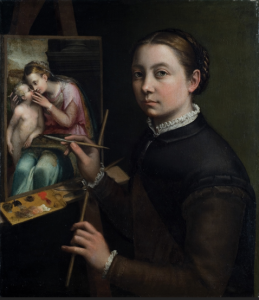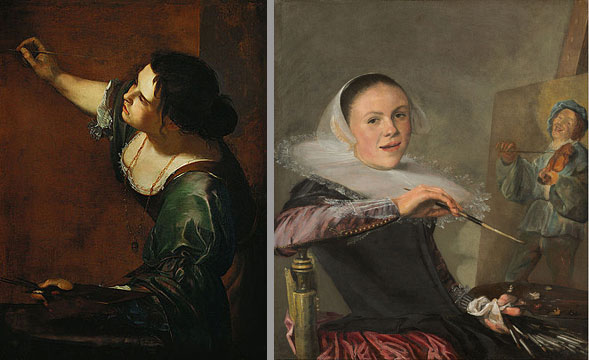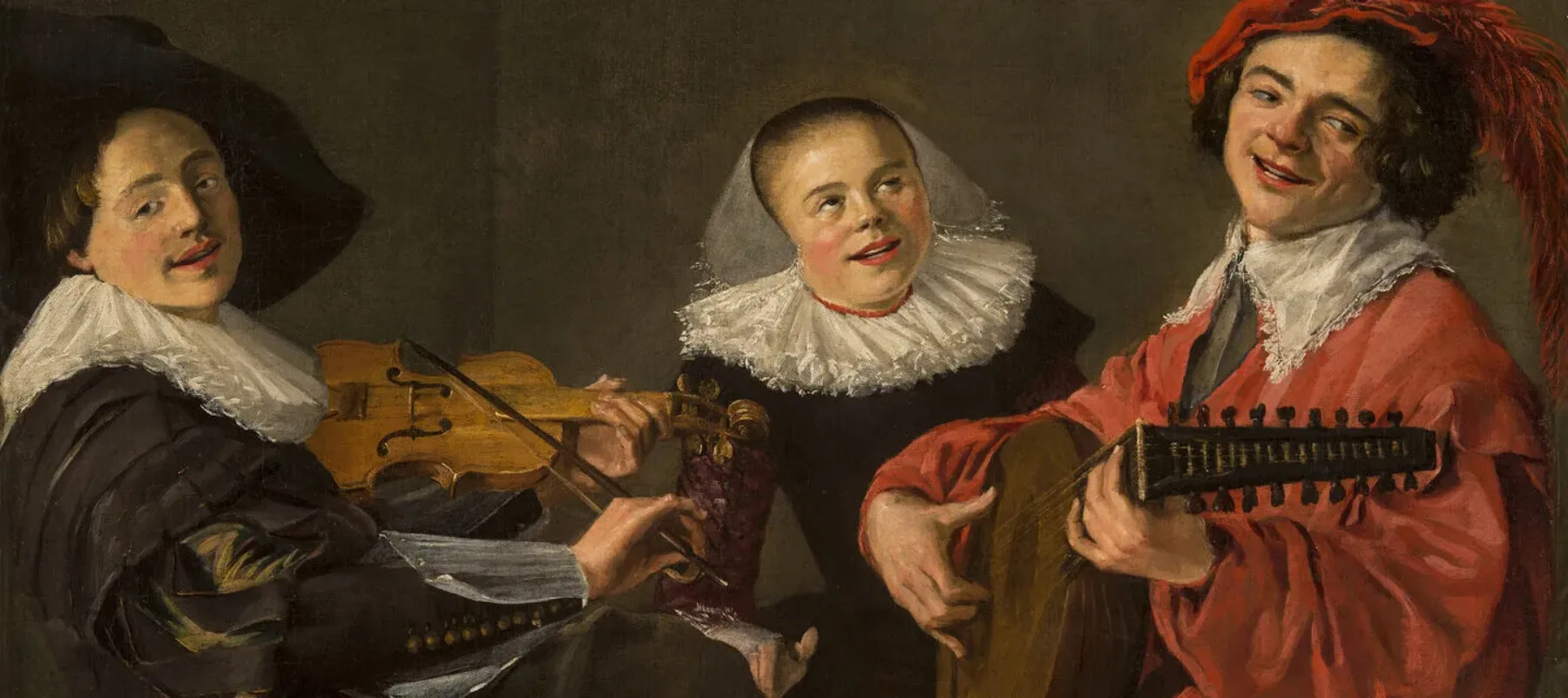Self-portraits convey more than just appearances—they affirm an artist’s identity. In the 16th and 17th centuries, women artists made portraits of themselves in their studios. Self-portraiture helped legitimize women as artists in a male-dominated profession. Sofonisba Anguissola, Artemisia Gentileschi, and Judith Leyster presented themselves with confidence, they asserted and promoted themselves in eras when society rarely deemed that appropriate for women.

Leyster’s The Concert is currently on view at NMWA, and paintings by Anguissola and Gentileschi recently appeared in Picturing Mary: Woman, Mother, Idea. By representing themselves in the traditionally male role of the confident artist, these women created places for themselves within the art world, regardless of their sex.
In Anguissola’s Self Portrait at the Easel, the artist identifies herself with the Virgin Mary on her canvas. Both are women of virtue with a reserved demeanor and simple dress. However, Anguissola’s strong gaze meets that of the viewer. She carries herself proudly as she displays her painting-within-a-painting.
Anguissola adheres to society’s expectations of depicting women modestly, yet she boldly shows that she is also an artist with talents for both portraiture and religious scenes.
Gentileschi’s Self-Portrait as the Allegory of Painting exemplifies her assured and dynamic painting style, even when applied to self-portraiture. In the Baroque period, allegorical figures (or people embodying abstract concepts) were generally represented as female figures. Capitalizing on this trend, Gentileschi’s painting goes a step further. She depicts herself as a symbolic representation of “painting.” Using her own likeness instead of an idealized figure, Gentileschi tests the conventions of feminine humility. In her painting, Gentileschi faces away from the viewer, absorbed in her work. Because her working canvas is out of view, nothing distracts the viewer from Gentileschi’s image.

Leyster, a successful Dutch artist, exudes self-assurance in her Self-Portrait. This is one of the few 17th-century depictions of a woman smiling. Typically, smiling or laughing in the art of Leyster’s contemporaries indicated mental instability or drunkenness. Leyster turns that stereotype on its head, along with the stereotype of the talented artist as a man. She shares the delight of the fiddler on her canvas while grinning at those who doubted her artistic ability.
These three works illustrate the ways that Western self-portraits incrementally became more confident and less demure. Pioneering women of the 16th and 17th centuries proudly painted themselves as artists, paving the way for a long tradition of female self-portraiture, from Elizabeth-Louise Vigée-Lebrun in the 18th century to Alice Bailly in the 20th century.
